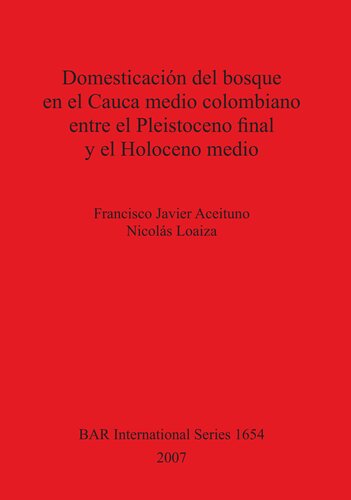

Most ebook files are in PDF format, so you can easily read them using various software such as Foxit Reader or directly on the Google Chrome browser.
Some ebook files are released by publishers in other formats such as .awz, .mobi, .epub, .fb2, etc. You may need to install specific software to read these formats on mobile/PC, such as Calibre.
Please read the tutorial at this link: https://ebookbell.com/faq
We offer FREE conversion to the popular formats you request; however, this may take some time. Therefore, right after payment, please email us, and we will try to provide the service as quickly as possible.
For some exceptional file formats or broken links (if any), please refrain from opening any disputes. Instead, email us first, and we will try to assist within a maximum of 6 hours.
EbookBell Team

4.1
40 reviewsThis volume presents the results from the research project entitled 'Domesticación del bosque en el Cauca medio entre el Pleistoceno final y el Holoceno medio', the objective of which was to rebuild the colonization and effective occupation in the premontane humid forests of the Colombian Cordillera Central (northern Andes). For a long period tropical rain forests have been considered geographical barriers for human dispersals, nevertheless the data presented in this book demonstrate that mountain range forests were colonized during the Pleistocene-Holocene Transition. Far from the ecologically passive hunter gatherer stereotype, the human groups that peopled the Cauca medio region developed agrilocality patterns very early on their settlement, implying the anthropic transformation of the humid Andean forests. These first groups developed forest adaptations based on the manipulation of plants, through the creation of anthropic patches that in effect constituted actual plant domestication 'laboratories'. Forest management in a migrating production was the main strategy of effective occupation of the territory up to the middle Holocene.